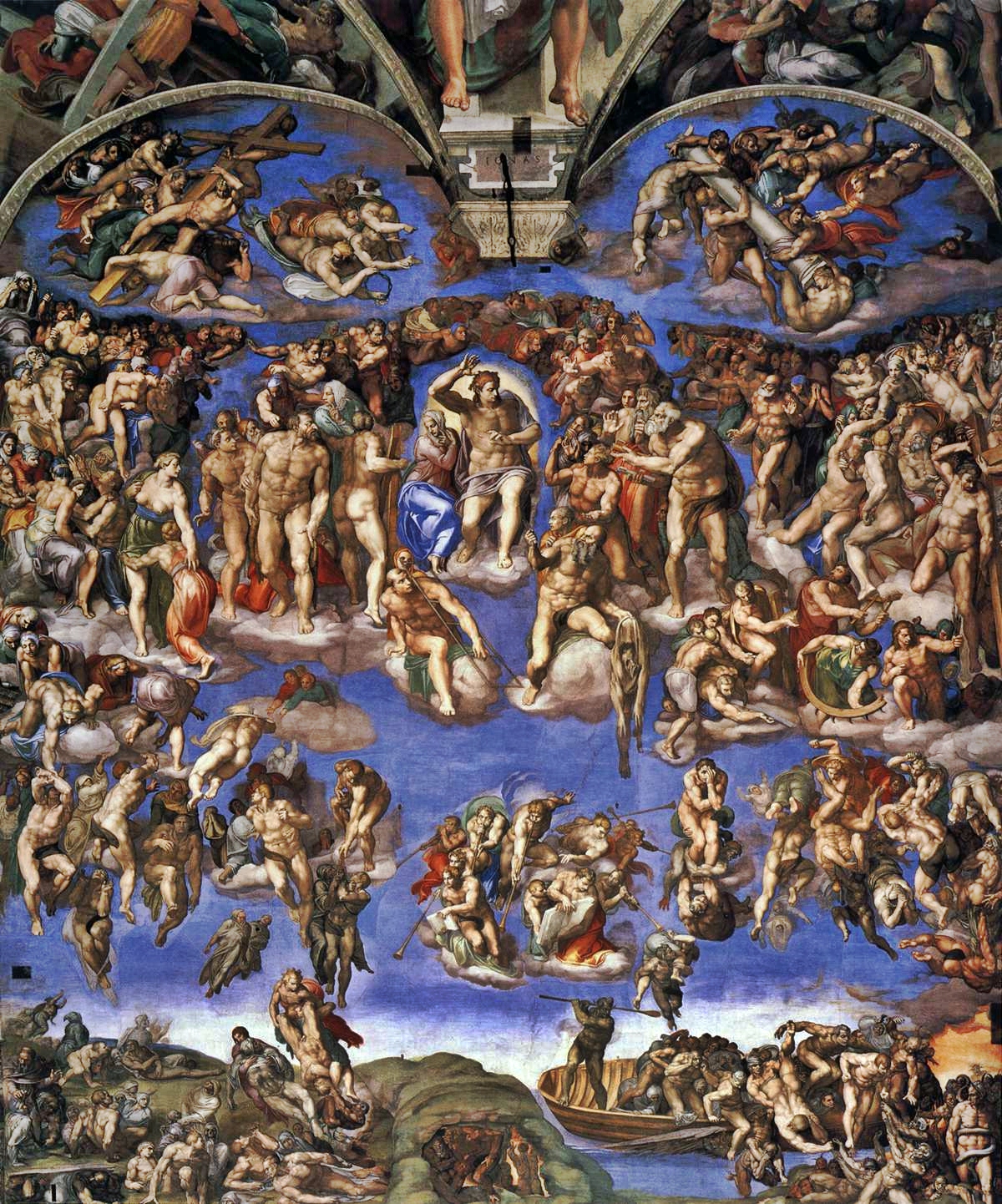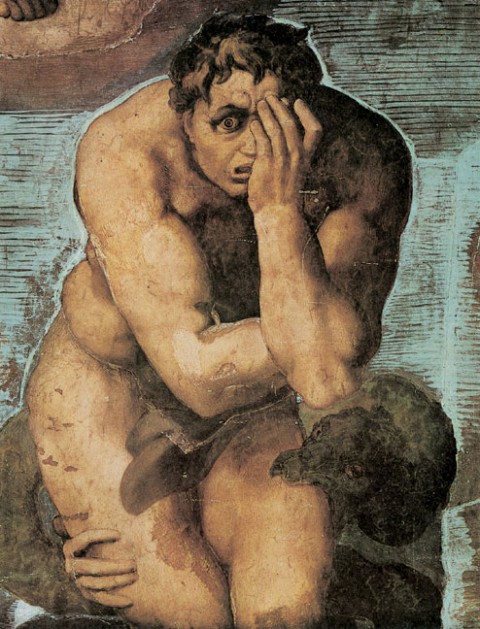Altar Wall
Michelangelo was invited back to Rome after two decades of work in Florence, by Pope Clement VII in 1536 to paint on the altar wall of the Sistine Chapel. After a long bout of not working with frescos, Michelangelo returned to it and created the Last Judgement which had significant differences from the ceiling paintings and was conferred a controversial masterpiece. One significant change in the Last Judgement is that it is darker in tone, more pessimistic, dynamic, and even violent. The painting is symbolic of the salvation of human life which was an extremely controversial topic in the times of religious turmoil after the rise of the Protestant movement in 1517.

More than 20 years after he painted the frescos on the ceiling, Michelangelo was called to paint the frescos from on the altar wall. And he painted the scenery from the Last Judgement from the Book of Revelation. Michelangelo depicts Christ in the high center of the altar. On either sides of Christ are the saints and Old Testament figures. And below Christ, there is a separation of the blessed from the damned. On Christ's right, are the blessed who are coming out of their graves and are being led to heaven by the angels, while on Christ's left the damned are taken on boats by demons to hell. This depicts a powerful time in the Last Judgment, as this is the end of time and Christ is depicted as a powerful figure who is facing towards the damned, smiting them. Beside him is the Virgin Mary who seems powerless but looks down towards the blessed instead.
In the scene of ascent to heaven, Michelangelo's non-incorporeal figures are extremely powerful and muscular and the angels that assist the people by pulling them up from their graves and into heaven, therefore, require to put a considerable amount of effort in pulling them up, as visible in the muscular tension depicted in the bodies. Directly below Christ are the angles blowing trumpets to wake up the dead. In the scenes of the damned, there are the fires of hell and the damned are being transported there by demons on boats, and the strength and the intensity is even more visible. The scenes are more violent and brutal. The damned are being pulled out of the boat. Some of them are trying to crawl back up but are being punched by the angels and the scene of chaos and misery is quite disturbing. One such man stands out and is called the "damned man".

The damned man is standing on a cloud and there is a demon below him and he looks visibly terrified and he has a green snake-like demon bitting his leg. The man has his hand on one of his eyes but the other eye is visible and the eye is open wide with fear and paralysis. The intensity of this scenery alone is quite disturbing. Michelangelo painted the altar wall in 1536-41 and in 1517 the Protestant Reformation began and the Martin Luther challenged the church. Between 1512 and 1536, there is a significant difference in Michelangelo's paintings in a way that depicts a more pessimistic view. For example, the human figures that are painted on the ceiling are more elegant and expressionistic and optimistic unlike the ones on the altar wall. On the altar wall the human figures are more distorted, less proportion in order to create a more powerful and intense picture rather than to depict the glory of the human form.